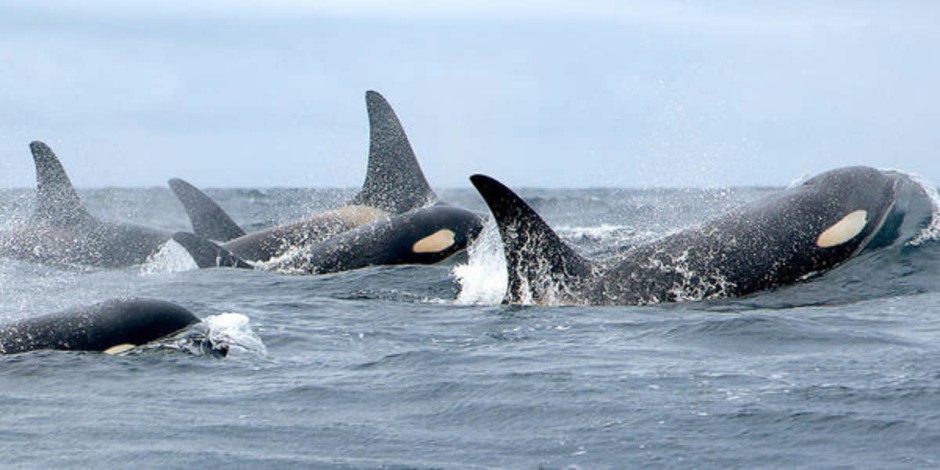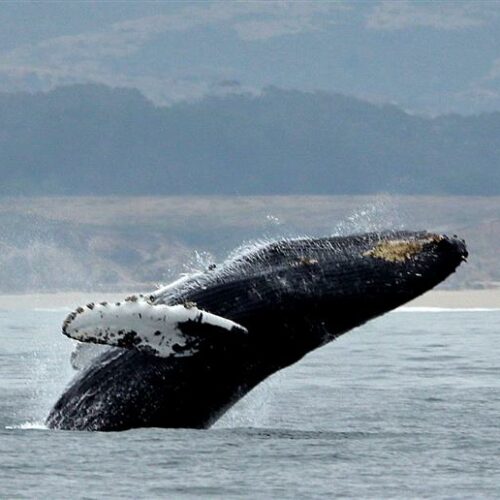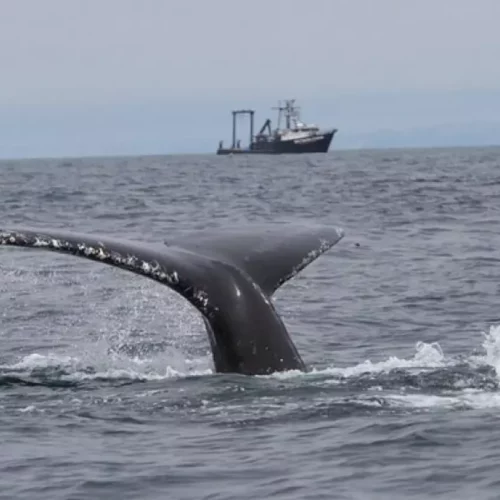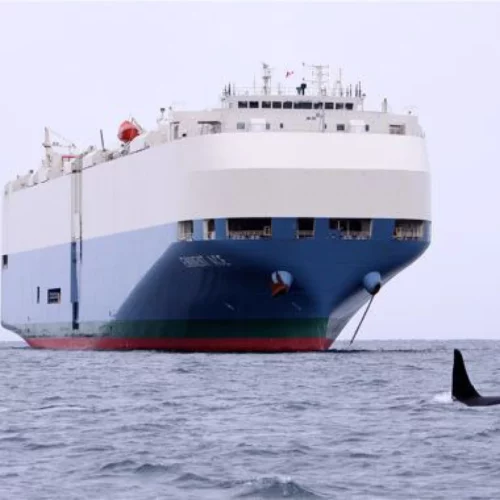
Tracking Whales In Puget Sound Is As Easy As Following Genetic ‘Bread Crumbs’ Left Behind
Researchers at Oregon State University have worked out a way to detect and identify whales long after they move on — just by sampling the water.
When whales swim they leave behind a plume of genetic material in the environment: skin, poop and bodily fluids. If you know what to look for, you can use that DNA to figure out what kind of whale went by.
Scott Baker is associate director of the Marine Mammal Institute at Oregon State University’s Hatfield Marine Science Center. His research team tested this idea on orcas in the Salish Sea, collecting and testing water samples in their wake.
“We were quite surprised to find that even up to two hours afterwards — and that was the limit of our samplings, we were still able to detect that the whales had passed through that body of water,” Baker said.
The research was published in the journal Frontiers.
Environmental DNA isn’t new technology. It has been used widely in freshwater systems to detect endangered and invasive species and to keep tabs on fish populations. But efforts to use this technology in the ocean are much newer.
“Application of eDNA to the marine environment is now trying to catch up,” he said.
Scientists have major questions about how the genetic material will move and how quickly it will degrade and disperse.
This discovery about the persistence of the DNA in seawater opens the possibility of detecting and studying other marine species, including those that are among the most elusive on the planet.
Baker says a DNA library exists for the nearly 90 known species of whales, dolphins and porpoises. It was developed to monitor the whale meat market in Asia — and make sure the varieties being sold were as advertised.
With this bank of genetic information in hand, Baker says doing these kinds of tests in open-ocean environment is the next step for refining the technology.
“Species like whales, whale sharks, sea turtles … these megafauna are actually pretty good candidates,” Baker said. “That being said, the ocean is a big place and the ocean is thin soup.”
Related Stories:

Whale, ship collisions around the globe could be helped by slower speeds, study shows
A humpback whale breeches off Half Moon Bay, Calif., in 2017. (Credit: Eric Risberg / AP) Listen (Runtime 1:06) Read Giant ships that transport everything from coffee cups to clothes

Lots of whales spotted around offshore wind farm zones along West Coast
The federal government has commissioned Oregon State University to look into the possible impacts of offshore wind farms on marine wildlife. In the first year of this four-year project, the researchers spotted sizable numbers of seabirds and whales — including the largest animal on Earth — in the Oregon and Northern California areas that could one day host floating wind farms.

Reducing collisions between ships and whales? There’s apps for that, but they need work
Fortunately, it doesn’t happen very often in the Pacific Northwest that ships collide with whales. But when it does, it’s upsetting, tragic and the whale probably dies. Three separate teams have developed smartphone-based systems that can alert commercial mariners to watch out, slow down or change course when whales have been sighted nearby. A recent ride-along on a big container ship demonstrated that real-time whale alerts are still a work in progress.















